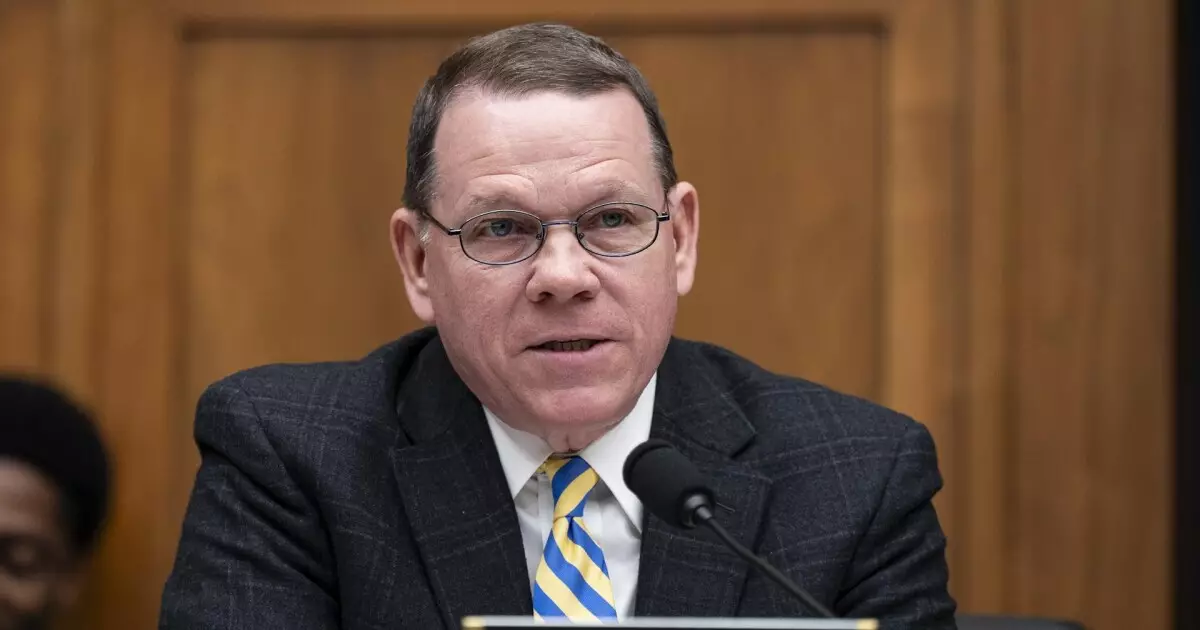As we look towards the forthcoming years, a discernible shift in infrastructure spending policies is becoming apparent. This shift is primarily characterized by a renewed focus on transportation avenues, particularly in road and rail expansion. The House Transportation and Infrastructure Committee, under the leadership of Rep. Sam Graves, has indicated that 2025 will mark a proactive phase towards meeting infrastructure demands. Graves’s commitment to aligning with the infrastructure initiatives of the Trump administration suggests a potential revival of policies that may have broad implications for future funding and project selection.
The committee’s role in reshaping infrastructure priorities is crucial, especially in a political climate where reshuffling leadership positions influences legislative agendas. Graves’s successful navigation through challenges to his leadership signifies a strategic retention of role that he may use to advance his agenda. His approach emphasizes a collaborative effort with the executive branch to ensure infrastructure priorities are not only developed but effectively implemented.
Compounding this discussion is the ongoing debate surrounding tax policies, particularly the Tax Cuts and Jobs Act (TCJA), which continues to trigger substantial debate among policymakers and economic analysts. The perpetual tension between preserving elements of the TCJA and accommodating new budgetary needs illustrates the complex landscape of fiscal policy in the United States. Jason Smith’s assertion that every effort must be made to uphold the tax cuts echoes a wider sentiment among Republicans who view these measures as pivotal for economic stability and growth.
However, the multifaceted challenges presented by the TCJA, particularly its influence on the municipal bond market and taxation deductions at state and local levels, have not gone unnoticed. Budget experts are raising alarms over the sustainability of extending the tax cuts without corresponding revenue streams, hinting at a potentially detrimental fiscal imbalance. This dichotomy of maintaining tax cuts while pushing for expansive infrastructure funding complicates legislative discussions and decision-making.
Recent reports on inflation further complicate the landscape. The Bureau of Labor Statistics highlighted that core inflation remains above the Federal Reserve’s target of 2%, which feeds into the narrative put forth by Republicans condemning the current administration’s economic strategies. The Ways and Means Committee’s projections reveal that allowing the TCJA to expire could result in substantial tax increases for the average taxpayer. Such forecasts carry powerful implications for voters, who may feel the pinch of an expanded tax burden. The conditions of economic anxiety, amplified by rising costs of living, create a perilous environment for current fiscal policies and their public reception.
These perspectives on inflation and taxation underscore the broader narrative of political accountability and economic stewardship. If Republicans move to extend the tax cuts as Smith suggests, the potential backlash from the electorate could serve as a pivotal factor influencing upcoming elections.
Amidst these discussions on infrastructure and tax, the arena of financial services is witnessing a significant transformation. The House Financial Services Committee’s new leadership under French Hill could catalyze substantial developments in cryptocurrency regulation. As the landscape for digital assets evolves, the call for robust regulatory frameworks is becoming increasingly urgent. This emerging focus stands in contrast to prior legislative tendencies and indicates a willingness among Congressional Republicans to adapt to changing economic realities.
The committee’s discussions surrounding cryptocurrency regulation will likely intensify in the context of a supportive administration, which could further stimulate innovation and investor confidence in digital assets. However, the path forward will require balancing consumer protection with the promotion of digital asset initiatives, establishing a framework that encourages growth while safeguarding participants.
Concluding this examination, it is imperative to recognize that the interplay between infrastructure investment, tax policy, and broader economic trends poses complex challenges for lawmakers. The decisions made by Congress in coming years will shape not only the immediate landscape of American infrastructure but also the overarching fiscal health of the nation. As Rep. Graves and his colleagues move forward into a new political era, it is hoped that they strike a balance between ambitious infrastructure goals and the pressing needs for tax reform, paving the way for sustainable economic progress.
In an age where infrastructure and fiscal policy are more interlinked than ever, lawmakers must heed the lessons of the past while fostering a proactive approach to governance. The outcomes of these legislative efforts will not only define economic conditions but also the social contract between government and citizens in the years to come.


Leave a Reply